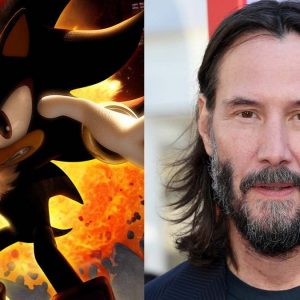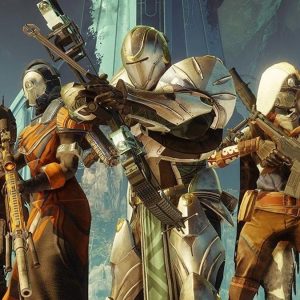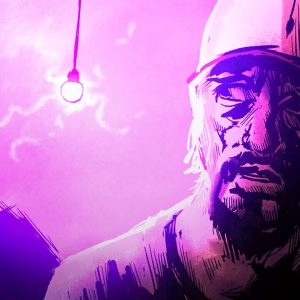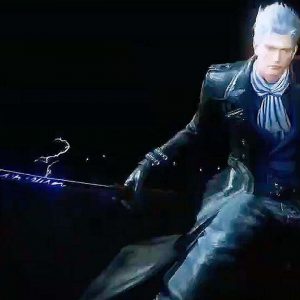[ad_1]
game. But after playing its first five chapters, the most striking comparison for Three Houses isn’t its fellow strategy games, but Persona. I was not expecting that.In typical Fire Emblem fashion, Three Houses begins as a mercenary hero with a mysterious past begins to discover their destiny. In this case, that involves finding out that there seems to be a magical girl with time manipulation powers living in your head – you know the drill. Soon, for initially unexplained reasons, you’re drafted in to become a professor at Garreg Mach Monastery, an officer’s training school for the continent of Fódlan’s three (relatively) peaceful countries – the Adrestian Empire, the Kingdom of Faerghus and the Leicester Alliance. Each country has a house at the school, and each house comes with its own strengths and weaknesses – you’re asked to choose one and become its head professor, steering the students’ education in the art of war. Imagine a version of Harry Potter where he was chosen to come in and teach instead of learn, essentially.
And here’s where it gets interesting. Between major story beats (which always centre around a traditional Fire Emblem battle), you’re presented with a calendar, dotted with duties, special events, even student birthdays. In fact, in my 9 hours with the Nintendo Switch game so far, the majority of my time has been spent on these moments between battles, because there’s quite so much to do.

Each week you’re able to offer personal instruction to members of your House, have them perform group activities to improve their bonds, and set their learning goals (which allow them to take exams to change troop class). On free days you can explore the monastery; performing odd jobs, garden, cook, fish, hold tea parties, even enter students into mock tournaments. That said, you could instead choose to organise seminars with guest lecturers who have different specialities to you, or take your student army into the field to help them build levels.
Every action comes with a points cost, with only a limited number of choices per week, making this a constant balance between personal stat-buffing, relationship building and party composition, never quite giving you everything you want and forcing you to prioritise. If you’ve played a Persona game, you understand.
“
It’s a novel way to approach the grind in a Fire Emblem game, while building on the series’ more recent interest in character development and interactions between every single hero. And lord there are a lot of heroes – every House features eight students, not to mention the teachers, monastery knights and other figures of Fódlan who appear from time to time. With most of that list recruitable to your army (you can charm students into ‘defecting’ with enough work), it feels like quite a feat of design and writing to allow for so many specific interactions between characters.
But while it has the structure of Persona, the opening of Three Houses suggests it lacks a little of the refinement. In Persona 5, conversations or events feel tailored precisely to the day you have them, making them feel special for finding and choosing them, but Three Houses often boils down to “should I talk to this person for some extra lance skills, or this person for extra riding skills”. Personally, I’m extremely into the min-max elements at work here, but I do worry that, without additions and after tens of hours, this process could feel more like busywork than meaningful choice for some. All of these non-battle sections can be skipped and automated, but being able to miss something you don’t like isn’t quite the same as having something you like in the first place.
Thankfully, Fire Emblem’s core combat remains as strong as ever – this is still the tense, punishing tactical fare we’ve come to expect, with enemies keen to surround and kill your fledgling heroes as soon as possible, while you balance weapon types and special abilities to manage the flow of battle. It’s more or less immediately familiar to seasoned players – barring the new lack of the series’ weapon triangle mechanic and some new options for special moves – but there are endless guides for new ones. One notable change comes in the form of Time Pulses, which allow you to rewind actions up to three times per battle – perhaps to offer more incentive for players to avoid Casual mode (where characters retreat rather than permanently die when their health’s depleted), but also allowing for a bit more attacking improvisation.
On a TV, it has to be said that Three Houses is a fairly ugly thing, particularly when it comes to environments (although it suffers far less in handheld mode), but it comes with a sense of presentational style that previous entries haven’t had. Battlefields are presented more naturalistically as smooth slices of terrain, with their underlying chess-like tiles only appearing when you’re controlling a character, and you can now zoom into the world to see your characters surrounded by equippable battalions of soldiers (which offer stat buffs and extra abilities). I found myself spending a lot of time looking at the world from this level, just for the sheer novelty of it. New battle sequences are just as nice on the surface, with the camera swooping even further down to watch your attacks, although I’ve been a little disappointed by how few animations are on offer, with multiple special moves sharing a single look.
In essence, that comparison to Persona is a blessing and a curse – it shows Fire Emblem is reaching for something new and exciting, but also sets a very high bar, both for look and feel. I have my worries, but Fire Emblem games tend to change radically tens of hours into their story, and we’ve already been told that the same will happen in Three Houses, meaning the novelty should hopefully stay fresh. Where it goes from there is still anyone’s guess, but there’s no doubt this opening section is a bold, confident step in a very new direction. Just like its student heroes, this is a series in the process of learning, and its learning from one of the best – that seems worth some extra credit to me.
Joe Skrebels is IGN’s UK Deputy Editor, and he is all Leicester Alliance, all day. Follow him on Twitter.
[ad_2]
Source link

























